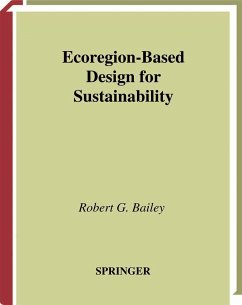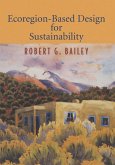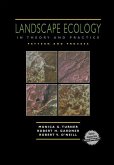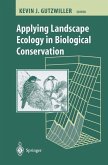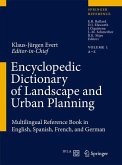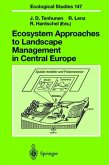This book completes Robert G. Bailey's celebrated study of ecoregions, begun in the landmark Ecosystem Geography (1996) and further articulated in Ecoregions (1998). In this third installment, the author expands his system for defining large-scale ecological zones to encompass principles of land management, regional planning, and design. In an engaging, non-technical discussion, he shows how larger patterns and processes that characterize a region - its climate, topography, soils, vegetation, fauna, and human culture - provide essential keys to the sustainability of ecosystems. Ecoregion-Based Design for Sustainability will be welcomed by land and resource managers, landscape architects and urban planners, ecologists, students, and anyone interested in ecology-based design.
From the reviews:
"The book moves well beyond classical ecology and links with environmental sustainability. ... The illustrations and examples Baily uses in this discussion are both persuasive and diverse. ... The appendices give useful information. Those not acquainted with the subject will benefit from these sections. Overall, the book is a 'good read', which even experienced professionals should enjoy because transdisciplinary communication, as well as communication with laypersons, can be vastly improved." (John Cairns, Jr., Environmental Conservation, Vol. 30 (4), 2003)
"This richly illustrated book completes Robert G. Baily's celebrated study of ecoregions, begun in the landmark Ecosystem Geography (1996) and further articulated in Ecoregions (1998). ... This book will be welcomed by land and resource managers, landscape architects and urban planners, ecologists, students, and anyone interested in ecology-based design." (Ethology, Ecology & Evolution, Vol. 14 (4), 2002)
"This text is the third in Bailey's explanation and exposition of the ecoregion concept. ... Overall, this is a very useful text. It describes ecoregions in ways in which they could be understood easily by the lay person. To assist this, the text is excellently illustrated using a wide variety of sources (postcards, photographs, maps etc.) which help to emphasise the utility of the ecoregion concept. ... It deserves the widest readership." (Teaching Ecology Newsletter, 2003)
"Text includes a concise overview of Bailey's classification system ... . most useful for those who prefer a quick overview of the ecological rationale for the delineation of ecoregions. An extensive list of references is included for those interested in ... ecoregion concept. ... Its principle contribution to a landscape ecologist's library is the discussion of the panoply of uses to which the ecoregion maps have been put. ... most appropriate for students of landscape architecture or general ecology, as well as landscape ecologists ... ." (Andrew Lister, Landscape Ecology, Vol. 18, 2003)
"The book moves well beyond classical ecology and links with environmental sustainability. ... The illustrations and examples Baily uses in this discussion are both persuasive and diverse. ... The appendices give useful information. Those not acquainted with the subject will benefit from these sections. Overall, the book is a 'good read', which even experienced professionals should enjoy because transdisciplinary communication, as well as communication with laypersons, can be vastly improved." (John Cairns, Jr., Environmental Conservation, Vol. 30 (4), 2003)
"This richly illustrated book completes Robert G. Baily's celebrated study of ecoregions, begun in the landmark Ecosystem Geography (1996) and further articulated in Ecoregions (1998). ... This book will be welcomed by land and resource managers, landscape architects and urban planners, ecologists, students, and anyone interested in ecology-based design." (Ethology, Ecology & Evolution, Vol. 14 (4), 2002)
"This text is the third in Bailey's explanation and exposition of the ecoregion concept. ... Overall, this is a very useful text. It describes ecoregions in ways in which they could be understood easily by the lay person. To assist this, the text is excellently illustrated using a wide variety of sources (postcards, photographs, maps etc.) which help to emphasise the utility of the ecoregion concept. ... It deserves the widest readership." (Teaching Ecology Newsletter, 2003)
"Text includes a concise overview of Bailey's classification system ... . most useful for those who prefer a quick overview of the ecological rationale for the delineation of ecoregions. An extensive list of references is included for those interested in ... ecoregion concept. ... Its principle contribution to a landscape ecologist's library is the discussion of the panoply of uses to which the ecoregion maps have been put. ... most appropriate for students of landscape architecture or general ecology, as well as landscape ecologists ... ." (Andrew Lister, Landscape Ecology, Vol. 18, 2003)

